Whether you are trying to get those first hundred followers or reach a million, your brain is constantly thinking about the next tip to improve your social media marketing strategy.
In this article, we’ll offer social media tips for all kinds of content. Be it tips for all-text posts on LinkedIn or short-form videos on TikTok, we have got you covered.
Let’s explore them one by one.
Social media content tips to fuel growth
- Social media video content tips
- Image-based effective content techniques
- Text-based social media content tips
- Emerging content formats tips
#1. Tips for video content
89% of businesses use video as a marketing tool in 2025. This means two things — as a brand, you can no longer ignore this content format. And more importantly, most brands out there are trying to create videos.
How do you compete for your audience’s reduced attention span? How do you convince them to keep watching your 30-second or 30-minute long video?
In this section, we aim to help you create engaging videos by providing tips for social media on different aspects of video creation.
Short-form video tips
When TikTok became popular, Instagram and YouTube were quick to follow suit and launch Reels and Shorts. A big reason why? They understood that short-form videos (ideally less than 60 seconds) were becoming popular among their audiences.
Here are four easy-to-apply social media marketing tips that will help your short-form videos reach more people and boost engagement.
Engage your audience in the first three seconds with powerful hooks
It is no surprise that you only have a few seconds to capture your viewers’ attention. Starting your video with a strong hook can keep them glued to the end. And that is an important metric for social media algorithms to decide whether to promote your content further.
Here are two ways to create these hooks and ace video marketing on social media:
- Begin with intriguing statements that trigger curiosity. This could be a statistic you recently discovered, a popular myth and why it is wrong, or a shocking fact.
- Use direct questions that address pain points to create an immediate emotional connection. You could take the help of your customer-facing teams to get insights into common customer problems and how you can turn them into social media video content.
Use transitions
Ever wondered why some social media videos keep you hooked even when the topic isn’t that exciting? It’s because of a smart play in transitions. You get immersed in figuring out what appears next or how the video ends.
For example, Sephora showcases four lip Glossier lip balms in this video using multiple transitions. No wonder this product video received a whopping 511K views and 13K likes.
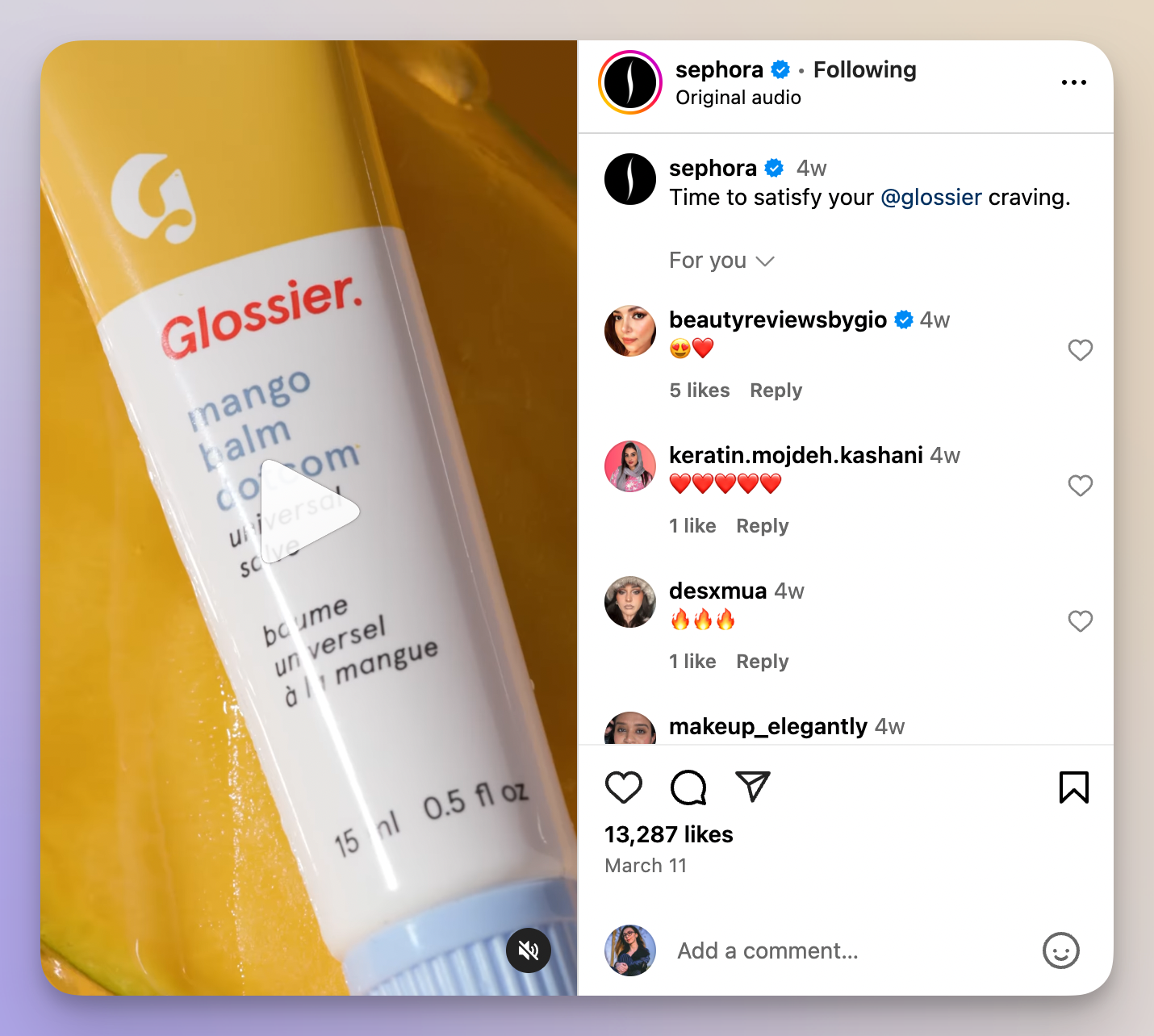
Here are some common transitions you can experiment with while creating videos for social media:
- Jump cut transitions: Quick cuts between clips to create a fast-paced, energetic feel.
- Match cut transitions: Align similar objects, poses, or motions between two clips for a seamless switch.
- Whip pan transitions: Quickly move the camera in one direction (left, right, up, or down) and match the motion in the next clip.
- Zoom in/out transitions: Zoom into an object or face in one clip and zoom out in the next for a sleek, connected effect.
- Cover & reveal transitions: Use your hand, an object, or even a camera shake to cover the lens and reveal the next scene.
- Spin or flip transitions: Rotate the camera or spin an object to lead into the next scene.If you’re new to this, we recommend using tools like CapCut and InShot. They have built-in transitions, templates, and tips for video marketing.
Use captions strategically
The best videos on the internet don’t leave you abruptly. Instead, they try to initiate a conversation with you. One way brands do this is by using captions.
For instance, you can end captions with an open-ended question to encourage comments.
Here’s how Headspace engages its audience by asking a simple yet relatable question in the caption — inviting them to share how they’ll spend their extra daylight hours during daylight savings.
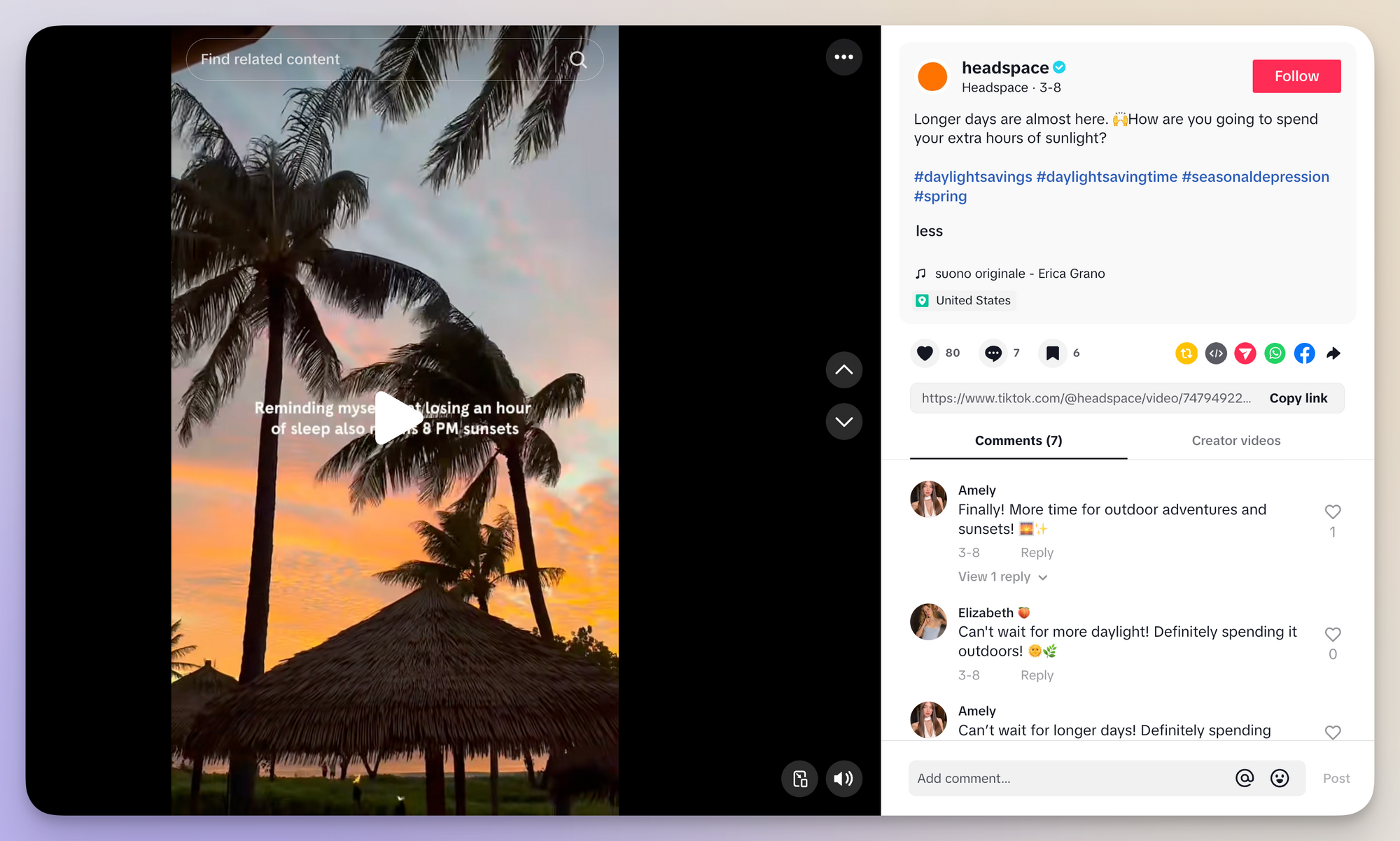
That’s not all. Use these captions to naturally include relevant keywords. This boosts your chances of showing up in search results whenever someone looks for those topics.
Consider ideal video length ranges for each platform
One of the social media marketing recommendations we often got during our SME interviews is — don’t stick to short-form videos for all topics.
For example, if you’re creating an educational video, you would want to give as much value as possible. In that case, a long-form YouTube video would be a great option.
Also, even in TikTok's case, slightly longer videos can perform better —in fact, according to our research, 3-minute videos on TikTok get the most views.
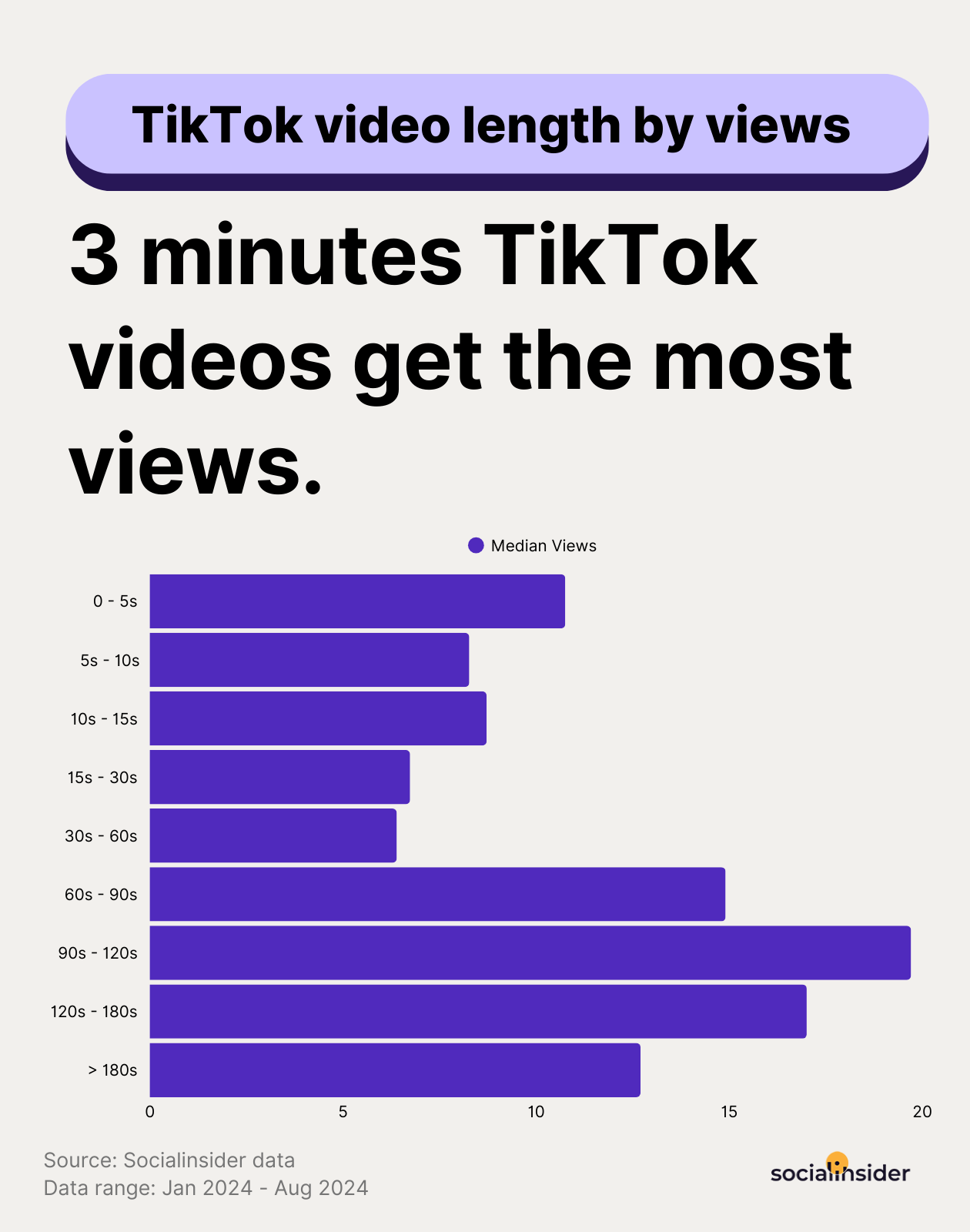
Depending on your goal, you can choose the ideal video length for social media. For example, if views are your KPI for TikTok, longer videos might work better for you.
However, if you aim for engagement, and your social media analytics indicate that shorter videos perform better for this particular, then the choice is easy.
By using a social media analytics tool such as Socialinsider, for example, you can get in-depth video performance metrics and insights for strategy optimization, like the best video length for different content types.

Long-form video tips
As we already saw, long-form videos are your best bet if you’re trying to educate your audience on a certain topic. It’s also ideal if you’re explaining complex concepts that require detailed walkthroughs.
For example, if you want to give a demo of your product or service, you can opt to create a detailed YouTube tutorial instead of a short Instagram Reel.
Here’s an example from HubSpot.
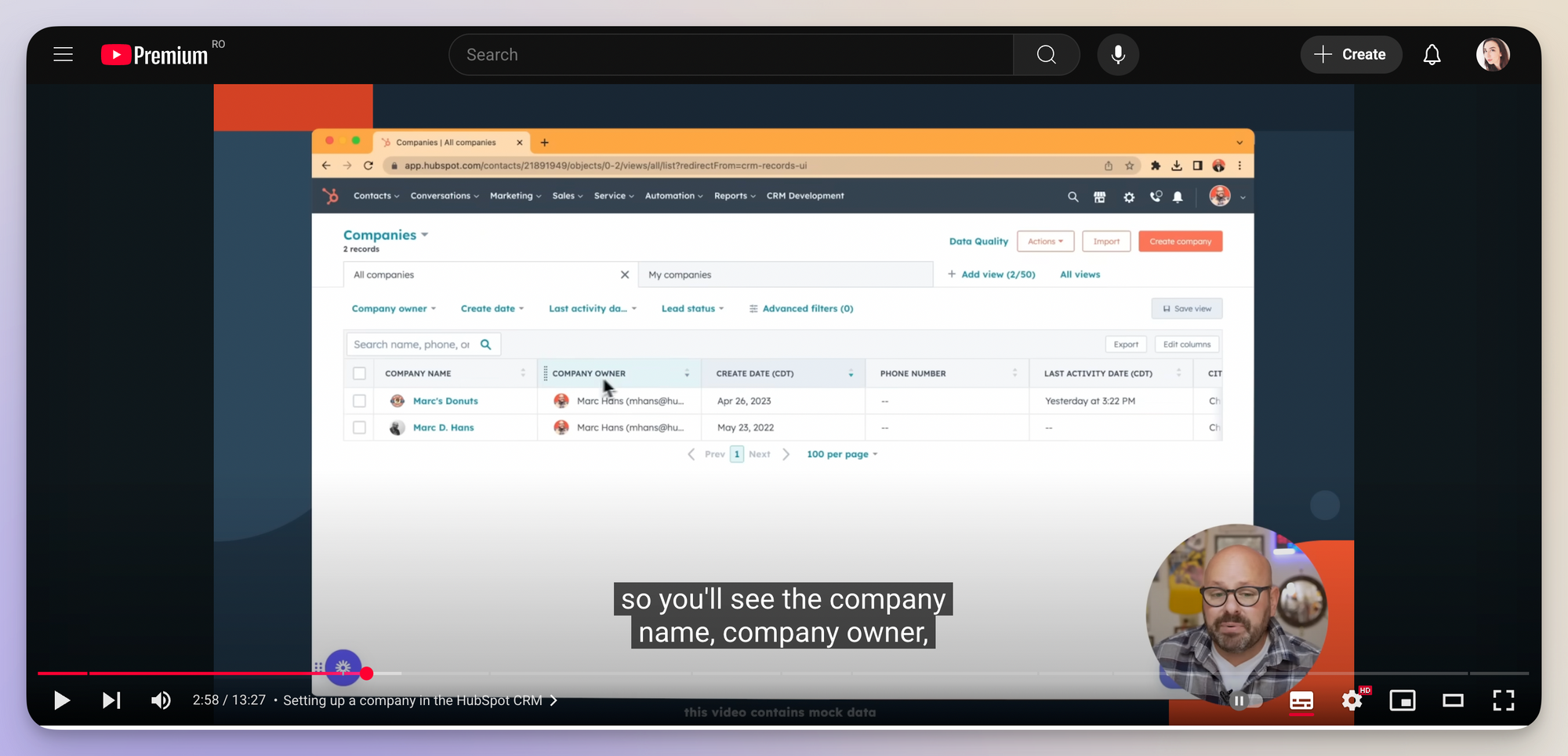
To summarize it quickly, use long-form video when:
- You need to dive deep into a topic and provide detailed information
- You’re creating tutorials, interviews, or in-depth product demos
- Your audience prefers detailed, high-value content over quick snippets.
- You’re targeting a certain metric or goal (for example, views on TikTok)
Ready to make long-form videos work for you? Below you'll find three social media marketing suggestions to keep your audience hooked.
Use retention optimization techniques
You want users to stay till the end of your 3-minute or 25-minute-long video. In fact, audience retention and watch time are some of the biggest factors in determining how well your video ranks on YouTube.
Here are three tips for effective social media marketing that will keep users glued to your long-form videos.
- Create a curiosity gap early in the video. This is where you preview something or give a sneak peek into what you’ll reveal later in the video. This social media video strategy keeps people engaged out of sheer curiosity.
- Use pattern interrupts. A pattern interrupt is a technique that uses unexpected elements to refocus and grab viewers’ attention. It keeps them engaged by breaking their usual viewing habits. For example, instead of focusing on a person talking continuously for 15 minutes, you can use graphics or animations in the middle of the video.
- Learn from your Audience Retention report. This report shows you where users drop off and where users stick around in your videos. By doing an analysis, you can find out what to change in your videos to increase retention. For example, if you notice a drop-off because of text-based slides in your video, use it less in the future.
Segment information in chapters
YouTube chapters break your video into sections, each with an individual preview. This allows viewers to quickly see what’s covered and jump straight to the parts they’re most interested in.
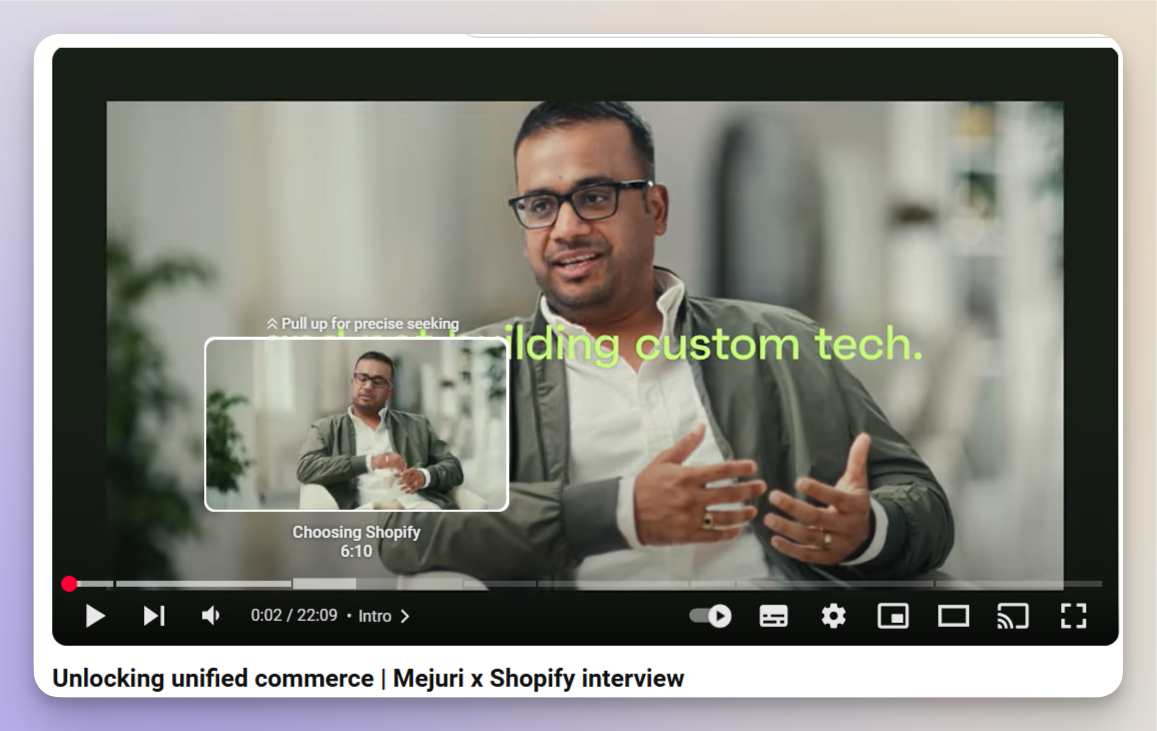
It looks like this:
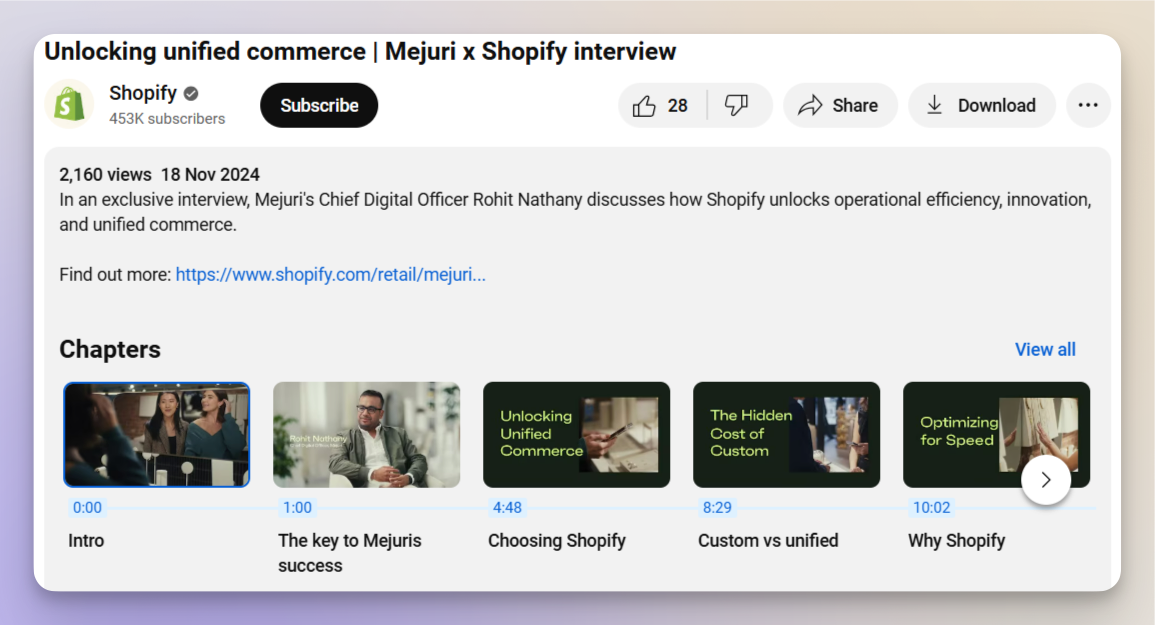
Before creating videos for social media and posting them, we recommend structuring chapters in decreasing order of importance for audience retention.
By leading with the most interesting or essential sections, you capture their attention early, making them more likely to watch the entire video.
Pay attention to platform-specific considerations
Every social media platform is unique. And so are its algorithms. LinkedIn wouldn’t rank a long-form video the same way as YouTube.
For example, YouTube favors videos that maintain the 8-12 minute "sweet spot" for most topics.
LinkedIn rewards more concise 3-5 minute videos with professional insights. Many brands even break down long YouTube videos into relatively smaller ones for LinkedIn.
Each platform has its own preferences for video length, style, and format, so it's crucial to adjust your content strategy based on these nuances.
Live video hosting tips
37% of social media users say live video content is the most engaging type of in-feed video content.
Brands have jumped onto this content format for two other reasons apart from this:
- Various social platforms prioritize live videos in their algorithms, meaning that the broadcast can be seen by a larger audience than regular posts.
- Live content feels more authentic, which helps build trust with audience. People appreciate seeing the "real" side of brands.
Below are social marketing tips for the different stages of a live video strategy.
Pre-promotion tips
Want thousands of people to tune in during your live video? The only way to do that is by creating hype weeks before the event.
Here are three ways to do that.
- Release a teaser. This teaser can feature the topics that will be discussed, the most valuable takeaways from the live event, and details about the host or invited guest. You can even include a countdown to build anticipation around the event.
- Collaborate with influencers or partners. Partner with industry experts, influencers, or relevant brands to help spread the word. Their audience can boost your reach, and a co-hosted event can create even more excitement and credibility.
- Build an event form or landing page. You don’t want people to forget about your event. By getting their registrations through a landing page or form, you can send them fun reminders.
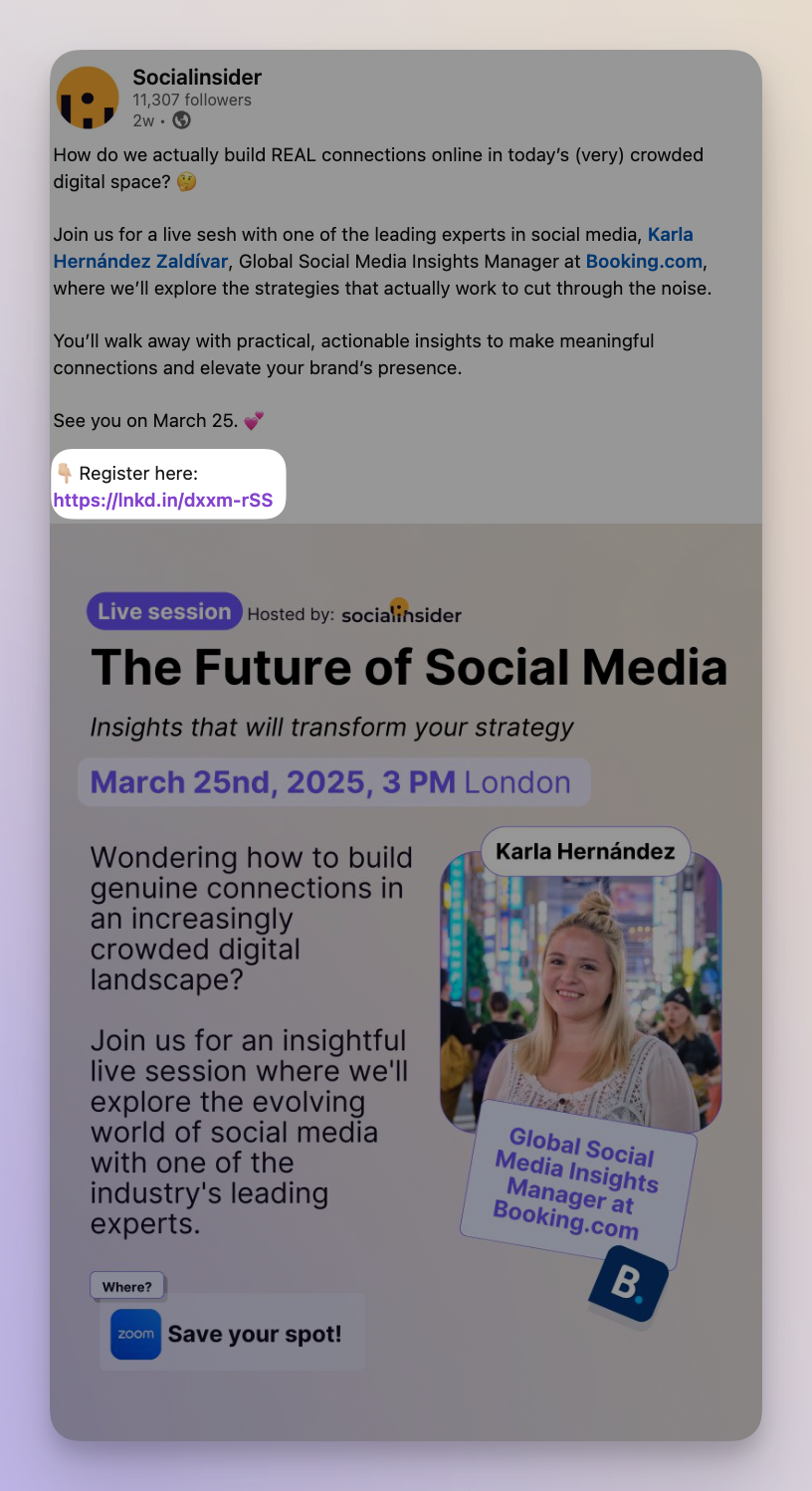
During live event tips
You now have thousands of people watching your video. What can you do other than provide value to them?
Use a combination of all these live video marketing tips.
- Keep the energy high. Maintain a dynamic tone, use gestures, and switch up visuals to hold attention. A monotone or low-energy presentation can lead to drop-offs.
- Engage with your audience in real time. Encourage viewers to ask questions, participate in polls, and share their thoughts in the comments. Responding to them makes the session interactive and keeps them engaged.
- Give a shout-out to viewers and comments. Acknowledge audience members by name when they ask questions or leave comments. This makes them feel valued and encourages more participation.
- Use Call-to-Actions (CTAs). Guide your audience on what to do next, whether it's following your page, subscribing, signing up for an offer, or sharing the live session with their network.
We also recommend looking at other brands in your niche and observing how they conduct their live videos. This ensures you adhere to niche-specific best practices and mold your video strategy with the best video tips for social media.
Post live event repurposing tips
You can continue sharing your live video on platforms like YouTube and Facebook long after the broadcast ends.
For example, Semrush has created a dedicated YouTube channel where they share live video events, webinars, and online conferences.
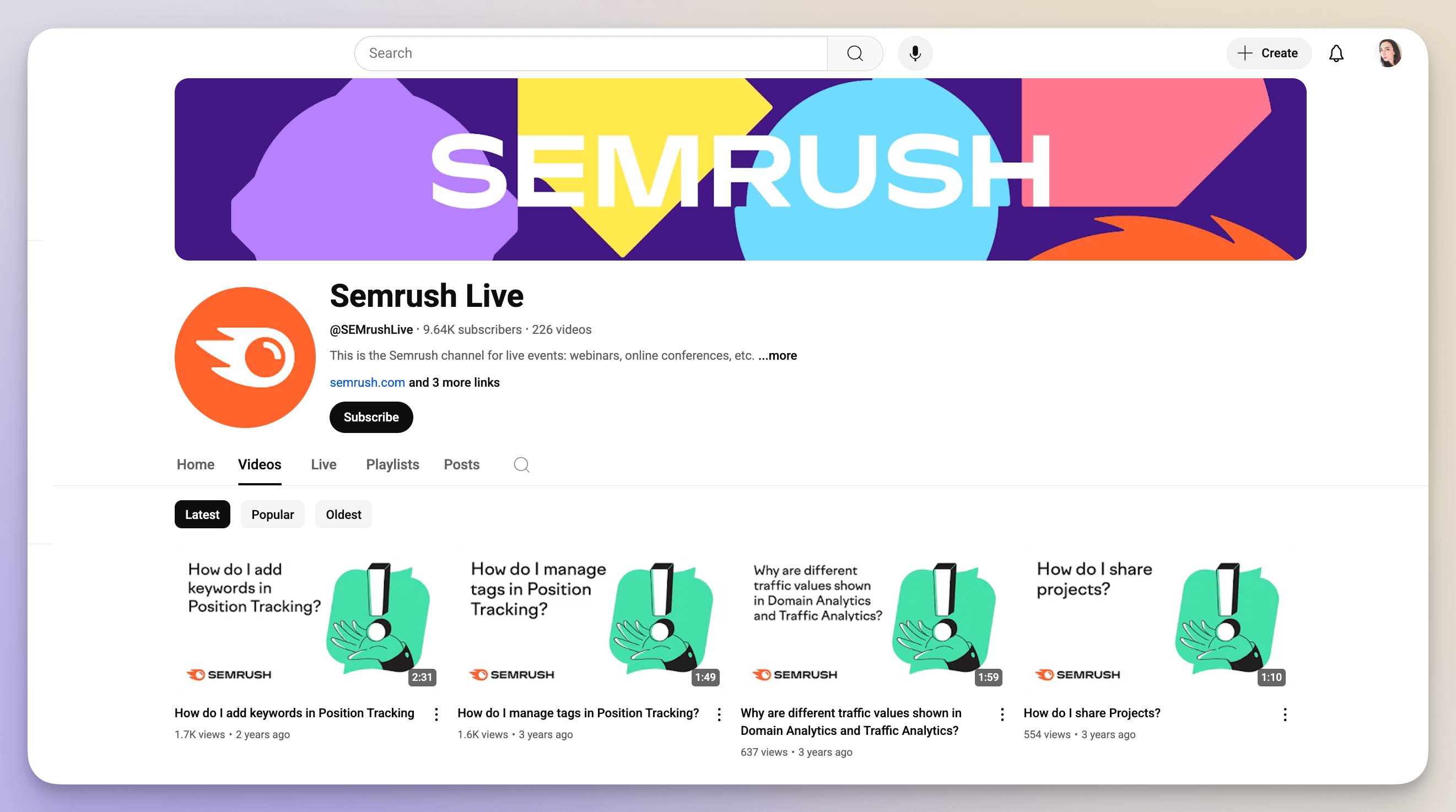
If you don’t want to create a separate channel, you can repurpose your video for various platforms using these social media posting tips.
- Create highlight clips covering the most engaging moments. Check your comments, gather feedback, or analyze where attention peaked and create 30-90-second clips covering those moments. You can even share a series of 3-4 such clips to encourage people to join your live videos in the future.
- Share quotes from key insights delivered in the broadcast. Highlight powerful takeaways or memorable moments from the live event by sharing direct quotes from speakers or hosts. Apart from posts, you can even share them in your Instagram Stories and start discussions with your audience.
- Package Q&A segments as standalone FAQ content for social sharing. Pull out the most common or insightful questions and repurpose them into bite-sized videos, carousel posts, or Twitter threads.
Tips for image-based content
Believe video is everything on social media? Think again.
For example, in our recent LinkedIn benchmarks report, we've discovered that multi-image posts generate the highest engagement rate on LinkedIn, outperforming all the other content formats.
Pretty wow, right? This only highlights the importance of creating a diversified content calendar. In this section, we’ll help you ace this content type.
Single image tips
Imagine scrolling through social media and stopping on a post that grabs your attention instantly with a bold statement, a striking visual, or a relatable quote. That’s the power of a well-crafted single-image post.
Whether it's an infographic, a behind-the-scenes photo, or a product showcase, a single image can tell a compelling story in seconds. But to make it truly effective, you need the right mix of design, messaging, and strategy.
Here are some solid tips to help you design better images.
Use color psychology to create a visual impact
Color psychology is a science that believes colors elicit a physical or emotional reaction in people and thus impact their behavior.
For example, you’ll see a lot of food companies using the colors red and yellow in their branding.
Think McDonald’s and Wendy’s. This is because red is known to stimulate appetite and create a sense of urgency, while yellow evokes happiness and warmth, making people feel welcomed and excited to eat.
Some other tips to go along with this:
- Utilize contrasting colors to stand out in crowded social feeds. High-contrast colors can make your content pop and grab attention instantly. Pair colors like yellow and black, red and white, or blue and orange to create a striking visual effect.
- Maintain consistent color filters across your content to strengthen brand recognition. It helps create a cohesive aesthetic and makes your content instantly recognizable.
Strategically place text overlays
Have you ever come across an image crammed with so much text that you just scrolled past without a second thought? That’s the kind of experience you never want to create with your text overlays.
Instead, we recommend limiting text to 20% or less of the image area for optimal algorithm performance.
Carousel post tips
According to our Instagram benchmarks study, carousel posts make for the most engaging content type within the platform. And they seem to perform exceptionally well on other platforms as well, including TikTok.
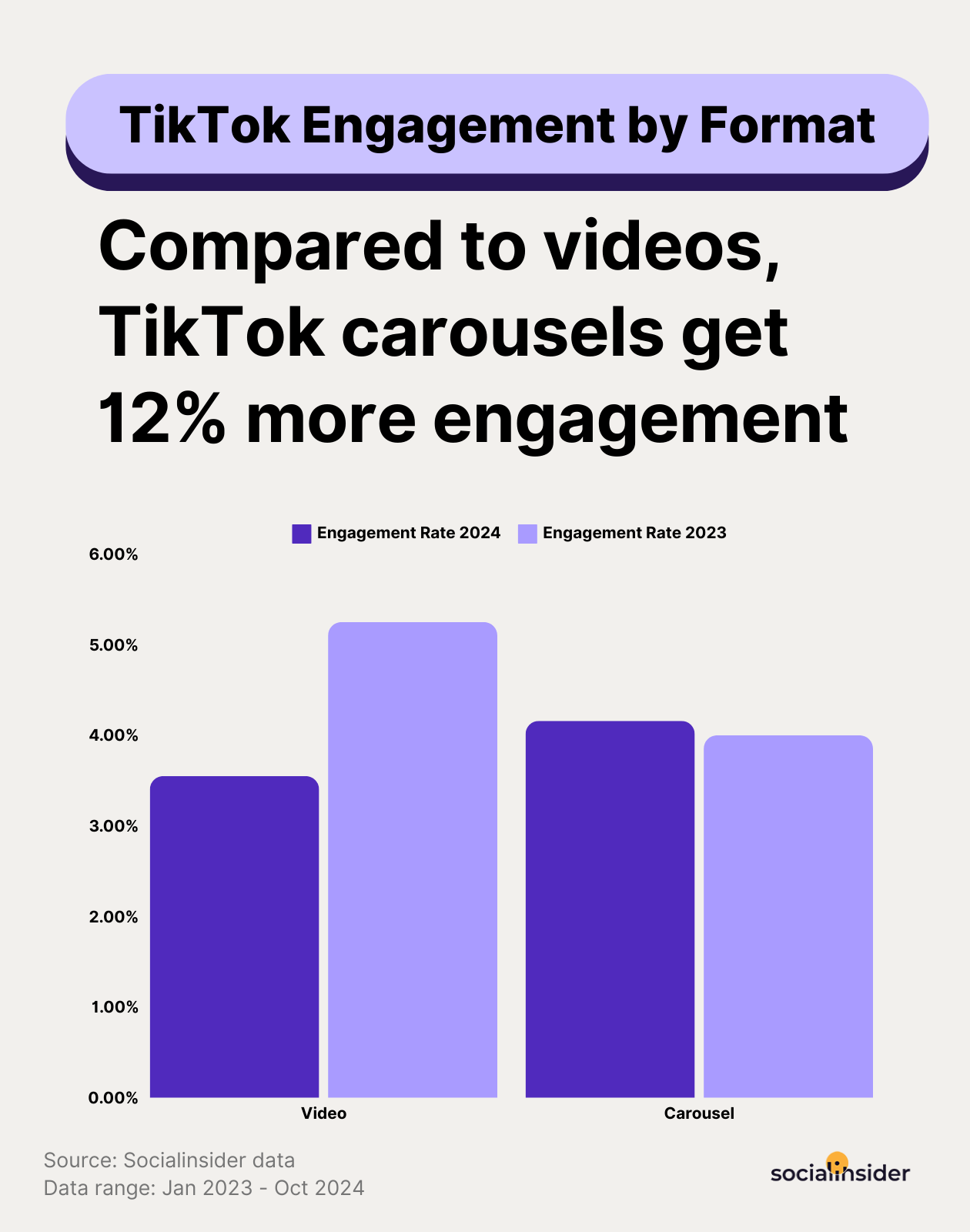
To make the most out of this content format, we recommend using the four strategies below.
Use the first slide to draw users in
You want your audience to swipe your carousel until the very last slide. One way to do this is to capitalize on the first slide.
Here are three ways to do that.
- Leave your audience wanting more by creating a visual or statement that feels unfinished, compelling them to swipe for the full picture. Here’s an example from Semrush. You instantly feel like swiping to understand what’s going on.
- Make it personal. Start with your brand’s experience or what your employees have to say about the topic.
- Put a fun spin on your content. Use trending memes or funny visuals to lead your audience to swipe next. Here’s how we mix our educational content with some funny and relatable social media memes.
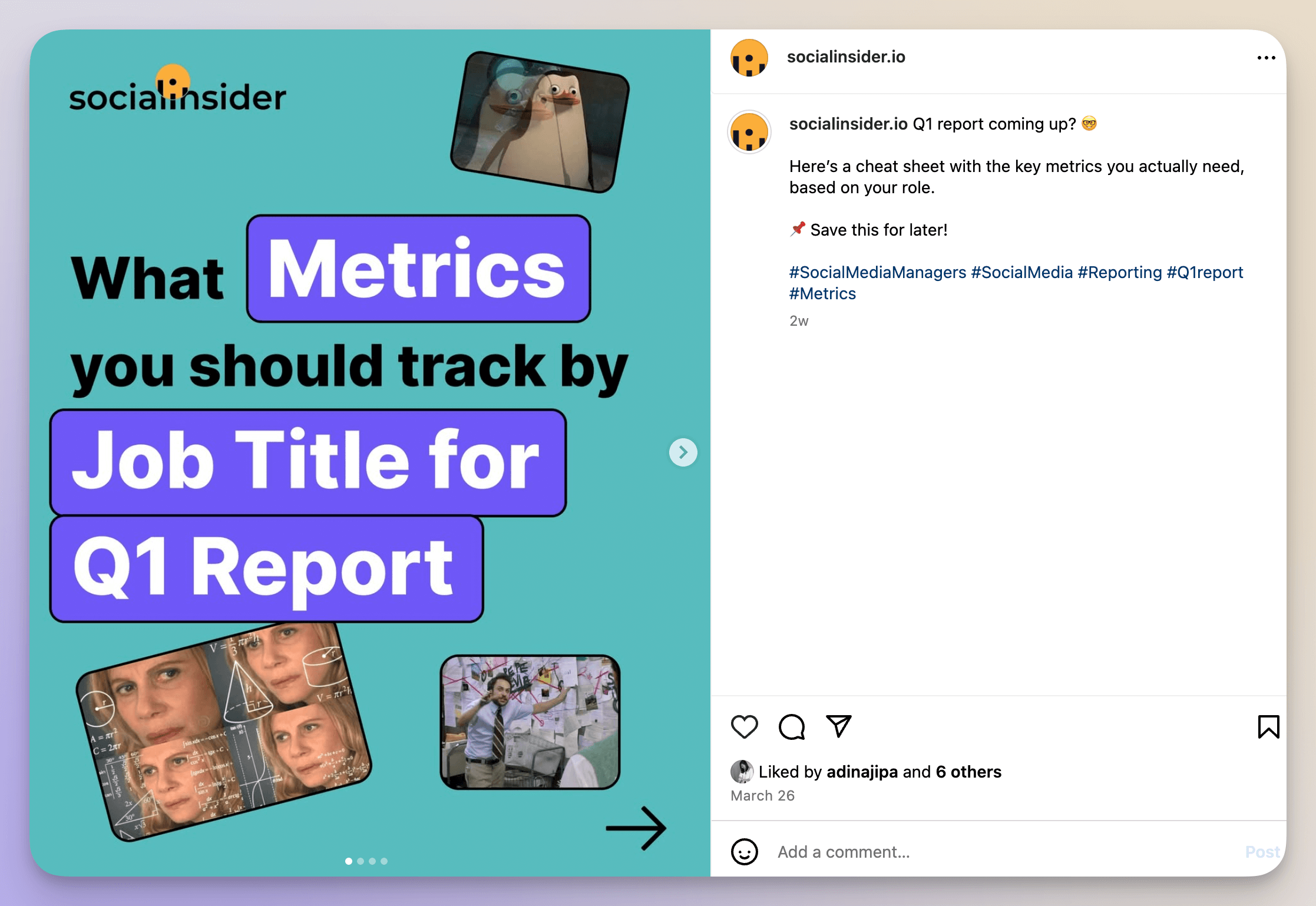
Focus on the storytelling nature of carousels
Unlike a single post, carousels encourage users to swipe through multiple slides to uncover the full message. This naturally boosts engagement and time spent on your content—two factors that social media algorithms love.
This storytelling could focus on before-and-after transformations, case studies and success stories, data and stats, behind-the-scenes content, and personal employee thought leadership carousels.
Here’s how Slite did it.
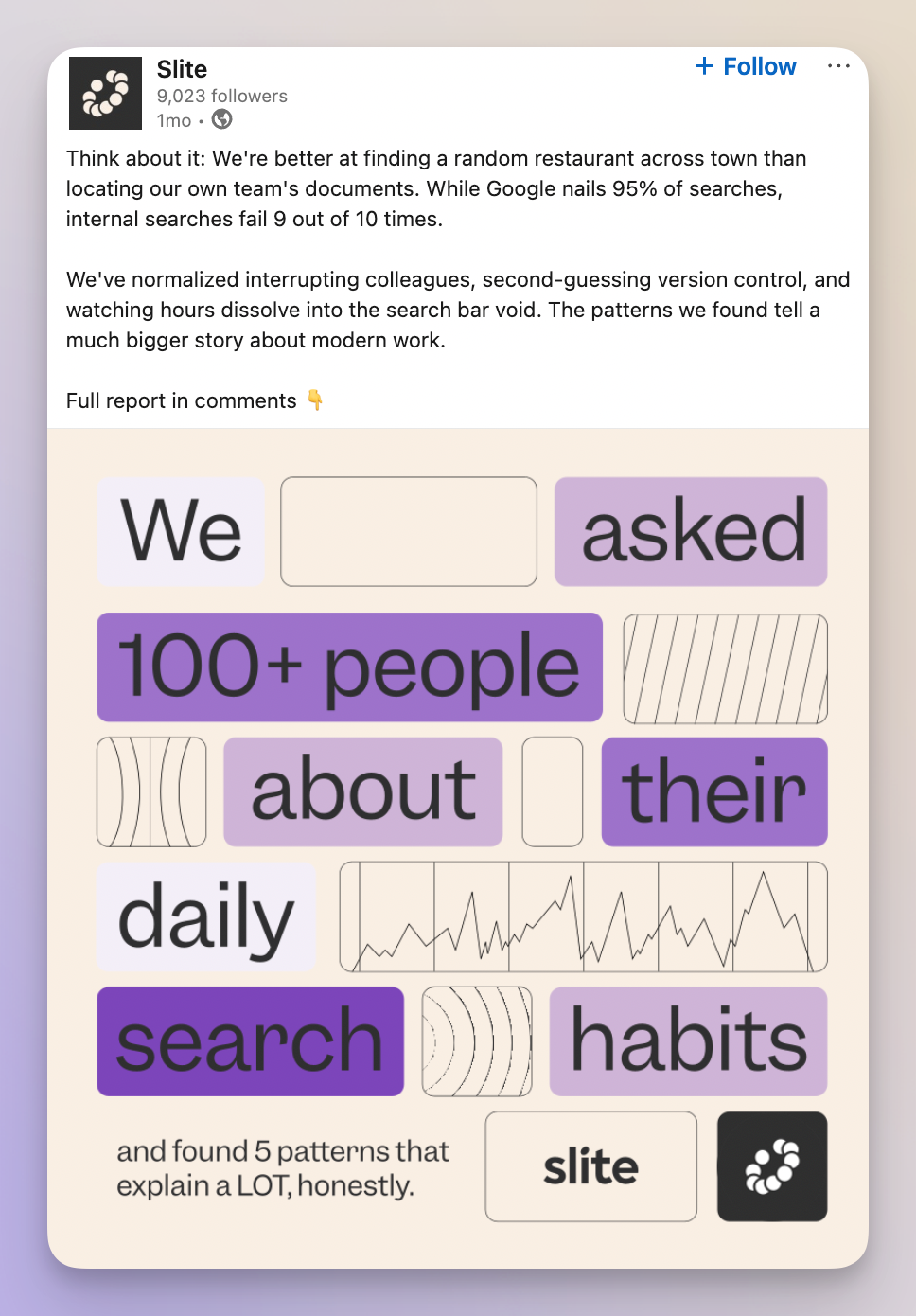
Christina Garnett, digital strategist and inbound marketer, said:
Great marketers are great storytellers. Just like with IG stories, Instagram carousel posts help you share your story through multiple images. Whether you use them to showcase a weekend trip, your latest items on sale or something else, having carousel images provides an opportunity for your audience to learn more. Use curiosity to spur them to not just scroll past your post but want to see what else they will discover in your post.
Structure slides strategically
To keep your audience engaged and lead them seamlessly through your message, structure your carousels using the Problem → Solution → Outcome framework. This approach not only builds intrigue but also makes your content more actionable and persuasive.
For example, you can start the slides with a hook about the problem, provide the solution in the middle slides, and show the result or outcome in the final slide with a CTA.
By structuring your carousels this way, you create a natural flow that keeps users swiping while delivering valuable, easy-to-digest content.
Create visual consistency between slides
I can instantly recognize some brands' content even before I see their username or logo. How? Because they’ve mastered visual consistency.
From colors and fonts to certain visual elements, they create a distinct style that makes their content instantly familiar.
Want to create that familiarity with your carousels? Here’s how to do it.
- Create 3-5 core templates that can be adapted for different content categories. These templates could be about a new feature update, step-by-step guides, listicles/tips, and case studies. By keeping the format the same for your main categories, you can create recognizable carousels.
- Establish a grid system for organizing information that becomes recognizable over time. For example, always placing text in the top third of your slides. Or using a two-column layout where you split your slides into two equal parts, with one side dedicated to visuals.
- Develop a 3-5 color palette that extends beyond your logo colors for creative flexibility. You can start with your brand colors and add secondary colors that complement your brand hues. Ensure you also test these colors in both light and dark themes. For example, if you scroll through Slack’s Instagram feed, you’ll see hues of purple, white, and blue being used across most posts.
- Define signature visual motifs that become associated with your brand over time. These motifs could be recurring shape patterns, hand-drawn elements, custom illustrations or icons, and branded borders or frames. For example, if you see our carousels on data reports, you’ll find common visual motifs like the same format of graphs and placement of titles in a box.
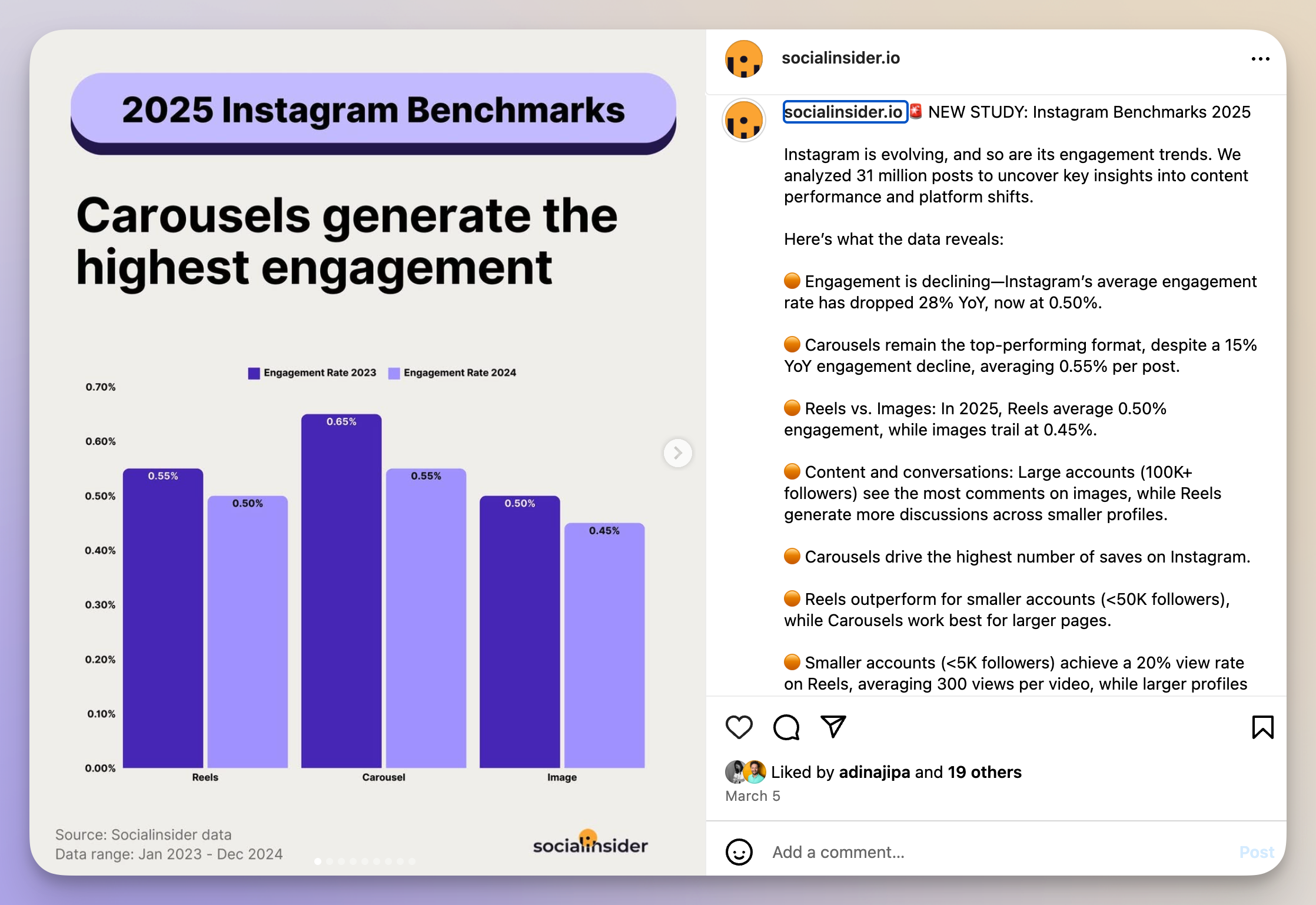
Tips for text-based content
Just because images and videos dominate social media doesn’t mean text-based content is obsolete. Whether it’s LinkedIn, Facebook, or X, well-crafted text-based content can get as many likes and shares.
For example, many brands create threads on X that reach millions of people. To make this possible for your brand as well, here are two major strategies to use.
Use language patterns and themes that drive action
The beautiful thing about text-based content is it can be as descriptive or as brief as possible.
For example, you can use platforms like X and Threads to create descriptive content, whereas you can just post a question on Facebook for your text-based content.
We recommend using value-focused phrases that emphasize benefits rather than tasks.
If you are sharing longer text-based content, we recommend starting with a powerful hook that draws users in. This could be debunking a myth, sharing a surprising stat, or telling a relatable story.
Utilize A/B testing
Not sure what type of text content resonates best with your audience? Use A/B testing to compare different variations of a post and check what drives the most engagement.
You can test different hooks, post lengths, CTAs, writing styles, and keywords. For example, you can keep the content the same but test whether a question-based or statement-based opening line grabs more attention.
While A/B testing, ensure you check for just one variable and keep everything else the same. For an accurate comparison, schedule both versions at the same time of day, on the same day of the week, and within a short period to control external factors.
To know more, read our one-stop guide on A/B testing for social media.
Tips for emerging formats
Brands are finding ways to make social media more immersive for their audiences. One way to do that is by using augmented reality (AR) and virtual reality (VR).
This may involve virtual try-ons that allow your users to try a product via a filter or AR-powered challenges that boost engagement.
Here’s how you can ace these emerging formats.
Utilize basic AR/VR creation tools
Think you need coding skills to use AR and VR in your social media content? Think again!
Many social platforms have made it easy for brands to utilize these features. Let’s look at two of the most popular platforms and the tools they offer.
TikTok Effect House
Effect House is an AR tool that helps create, publish, and share high-quality AR effects for TikTok.
They also have many video tutorials and templates, so you won’t have to spend time figuring out where to start.
For example, Fenty Beauty launched a shade match filter on TikTok so users could find their perfect shade without having to visit the store.
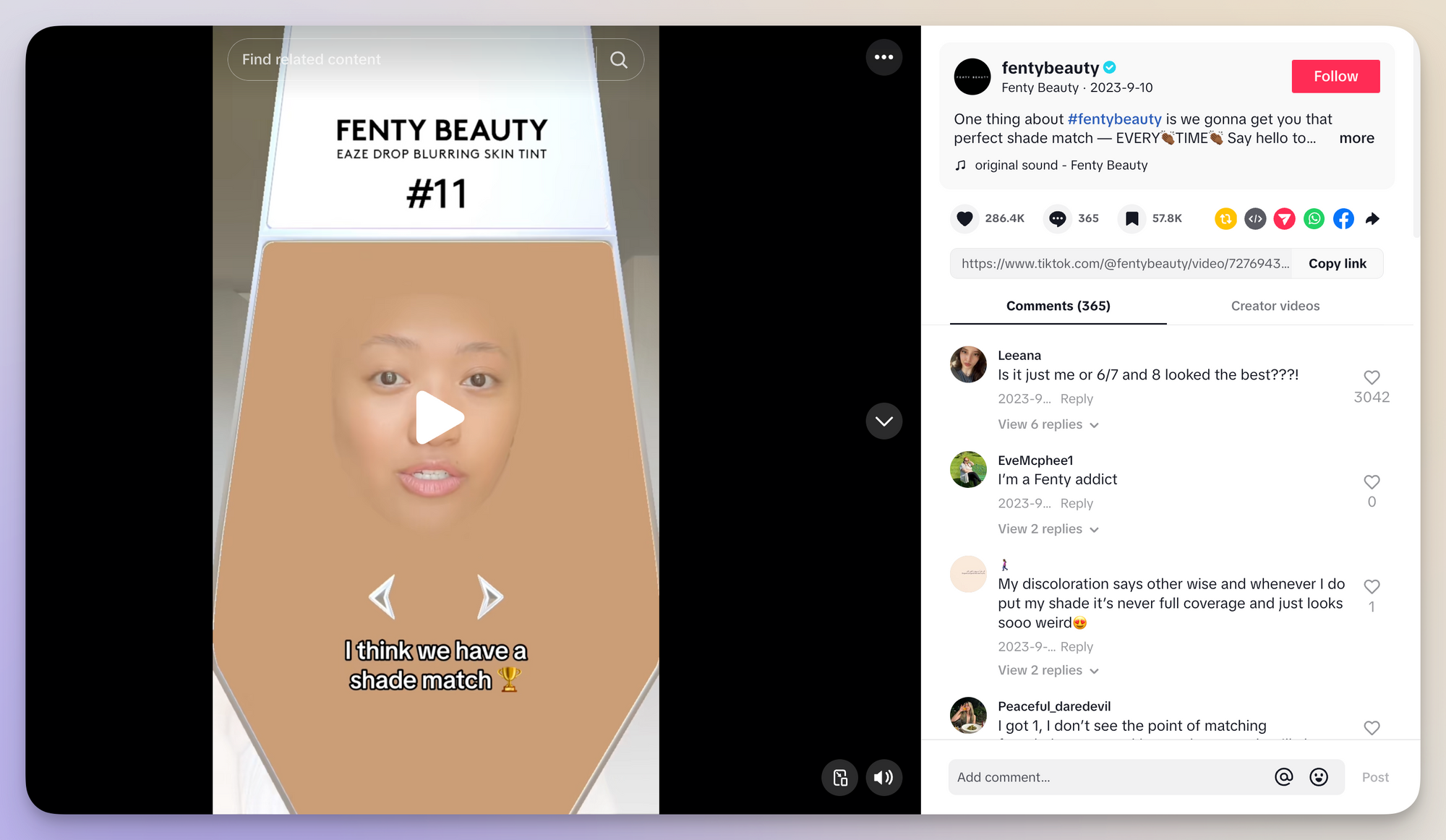
Place more emphasis on user experience
At the end of the day, AR and VR should do more than just look cool. They need to captivate and engage your audience. If your filters, lenses, or gamified experiences don’t spark interest or provide real value, they risk being ignored.
This is why you should focus on the first five seconds of your video. Provide immediate value or entertainment. This will encourage users to try your filter/lens, share it with their friends, and boost the visibility of your brand.
If your brand addresses a specific user need, it’s more effective to leverage AR and VR to solve those problems directly rather than using the technology just for novelty.
When AR and VR provide real, practical value, like helping users try products, visualize solutions, or enhance their experiences, they feel more authentic and impactful.
Utilize platform capabilities to create experiences
TikTok Shopping. Facebook marketplace. Instagram Shops.
Who knew we would one day be able to shop from our favorite social platforms? AR and VR are great technologies that can take this shopping experience one step further.
For example, Pinterest released an AR try-on for home decor, which enables users to virtually place furniture in their homes. This goes with the try-before-you-buy trend and allows furniture stores to capitalize on social commerce.
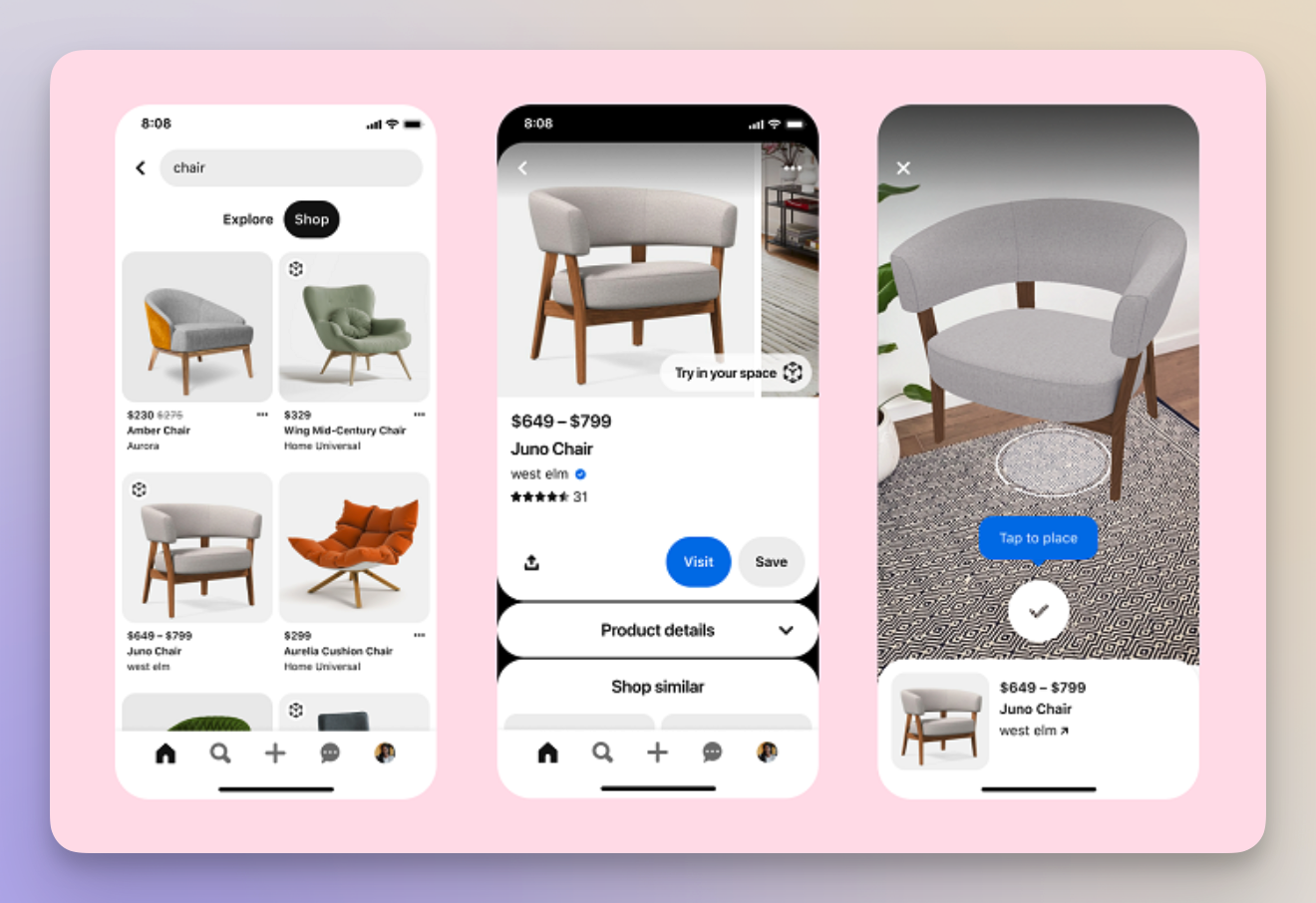
Whether your social media strategy focuses on Pinterest, Snapchat, or TikTok, ensure you dig deep into its AR features and use them to create valuable experiences, not just flashy gimmicks.
Final thoughts
The time has long gone when winning on social media revolved around chasing trends and copying competitors' actions. Today, it’s about creating content that connects with your audience and keeps them coming back.
Every strategy should focus on adding value, whether it’s leveraging AR and VR for immersive experiences, using all-text posts for storytelling, or optimizing video content for retention.
If you need a partner to handle the analytics while you experiment with different social media tips, Socialinsider has your back. Start your free trial today and see the difference for yourself.







